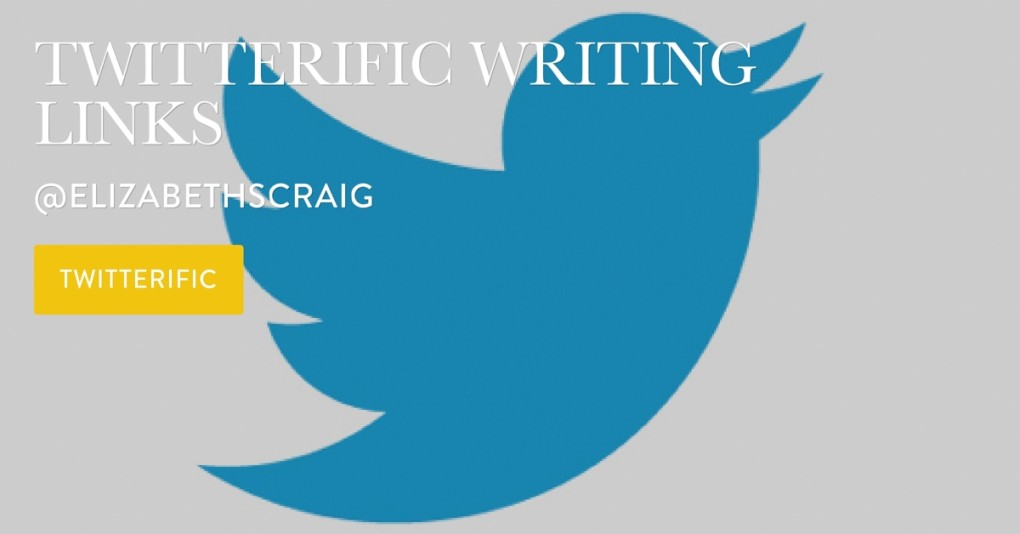by Elizabeth S. Craig, @elizabethscraig
Twitterific writing links are fed into the Writer’s Knowledge Base search engine (developed by writer and software engineer Mike Fleming) which has over 48,000 free articles on writing related topics. It’s the search engine for writers.
Have you visited the WKB lately? Check out the new redesign where you can browse by category, and sign up for free writing articles, on topics you choose, delivered to your email inbox! Sign up for the Hiveword newsletter here.
- Is Collaborative Writing on the rise? And Making the Most of It: @msheatherwebb @WriterUnboxed
- 5 Freelance Writing Tips: @robertleebrewer @WritersDigest
- Two Vital Questions to Ask Yourself About Writing: by Diane Tibert
- For Indie Publishers: When and Why to Work with a Trade Book Distributor: @joebiel_ @JaneFriedman
- How to understand readability stats: @pubcoach
- Sharjah Book Fair Opens With Spectacle, Ceremony: @Porter_Anderson
- The UK’s Sunday Times/PFD Award for Younger Writers Shortlists Four Debuts: @girlhermes @LauraSFreeman @FJMoz @adamweymouth by @Porter_Anderson @YoungWriterYear
- Hay Festival Announces New Events in Peru and Chile: @Porter_Anderson
- Canada’s 2018 Cundill History Prize Finalists: Authors and Climate in Context: @Porter_Anderson @pubperspectives
- At Sharjah, London Book Fair Plans Market Focus Indonesia: @Porter_Anderson @BritishCouncil
- 3 Ways to Reach Your Writing Goals: @AlyssaColeLit @NaNoWriMo
- How to Use Scrivener for NaNoWriMo: @Gwen_Hernandez @JamiGold
- 16.67 Ways to Juice Your Daily NaNoWriMo Word Count: @theladygreer @WriterUnboxed @NaNoWriMo
- 6 Ways to Balance NaNoWriMo and Your Life: by Gianna Maria @NaNoWriMo
- The Spouse’s Guide to NaNoWriMo: Juggling Life and Writing in November: by Thomas Hardy @Janice_Hardy
- 30 Tips for Conquering Your 30-Day Writing Challenge: by @JessZafarris @WritersDigest @PiSquare @Metal_and_Earth @ganymeder
- How to Break the Rules for the Best NaNoWriMo Ever: @weems503
- National Novel Writing Month — 4 Tips to Help You Laser-Focus on Your Writing: @_TJ_Rigg @NaNoWriMo
- How to Write More Words: Winning at NaNo: @MegLaTorre @AngelaAckerman @NaNoWriMo
- Write Your NaNoWriMo in a Flash: @Lindasclare
- “My body is conspiring against me winning NaNo”: @Vampyr14 @OpAwesome6
- 11 Tips to Beat Procrastination and Get that Novel Drafted: @AnnieNeugebauer @LitReactor




